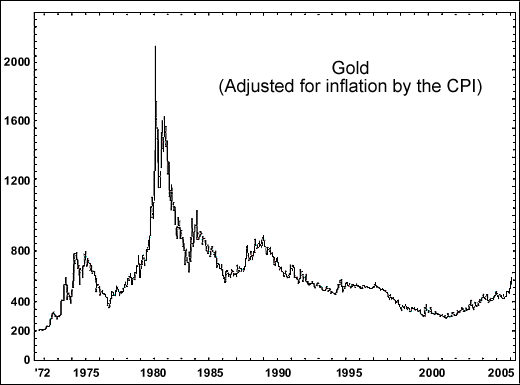| Home | About Us | Resources | Archive | Free Reports | Market Window |
Biscayne Boulevard Part IIBy
Friday, March 24, 2006
“Miami real estate will eventually be priced the same as New York.” That’s what a Miami real estate broker told me last week. “What an incredible prediction,” I thought. This woman has faith. In case you missed Wednesday’s column, I went to Miami last week and investigated the condo market. I heard it was in a bubble, and I wanted to know the real story. First, I posed as a buyer. I spoke to condo brokers and salespeople. I wanted the real scoop... but they all towed the company line while handing me glossy brochures. My next contact did not... and here’s where things get interesting... Jack McCabe runs a research and consulting business based in Deerfield Beach, Florida. He sells his research and analysis of local real estate markets to some of the most important developers, brokers, managers, lenders and appraisers in Florida and the Caribbean. Here’s what he told me:
McCabe says the speculators have left the market and buyer demand has dropped by about 50%. So far, prices have only plateaued, he says, but all the signals that normally precede price declines by about three months are present. In Boynton Beach, it used to be common to see people camped out in front of new developments the night before a grand opening. The Gateway Club at Orchid Bay had their grand opening two weeks ago...
He continues...
McCabe predicts we’ll see a huge number of projects cancelled and postponed. Deposits will be refunded. Many of the condos planned in Miami will never get funding, and we’ll read about tons of class action lawsuits and real estate litigation. He anticipates a 20-30% price decline in the new condo projects, specifically those developments away from the water. “Could be more severe,” he says. “I try to err on the side of caution.” New York real estate is in a bull market too. But unlike Miami, I don’t think New York’s real estate prices will crash. Here’s why: New York has an affordability problem. Real estate has become very expensive and most people simply can’t afford it. It’s the same story in Boston. Or London. And I’d guess, Hong Kong too. Sure, prices may stop rising. They may even decline a little. But I don’t think prices will crash because supply is so tight. There just isn’t a lot of extra room. South Florida is a totally different story. There’s the affordability issue, but there’s also a supply glut. All the new condos coming on the market are a massive additional source of price pressure. If you want to make a bet on a housing bubble, I suggest you zero-in on the South Florida market. I have two excellent ideas for you. WCI Communities (WCI) is a large residential luxury real estate developer with massive exposure to South Florida. Right now, WCI has a projected development of 22,000 properties, 90% of which are in South Florida. I counted 31 projects in South Florida on their website, including over 20 condo towers. Corus Bank (CORS) is based in Chicago. They specialize in commercial real estate lending. In other words, they lend money to the developers and construction companies. They have $8.3 billion in total commercial loans outstanding, of which 90% are real estate development loans. Of those real estate loans, 91% are for the construction of condominiums. 33% of these condos are in Florida, 22% are in California. The rest are in New York, Las Vegas and Washington D.C. Consider these two ideas a jumping off point for further research on the Miami condo glut. When you combine that glut with the blind faith of hopeful investors, you have the makings for a sharp drop in all things related. Good investing, Tom Dyson Market NotesGOLD: THE REAL BULL MARKET HASN’T EVEN STARTED… After five years of steadily rising prices, investors may be wondering if gold’s bull market is getting long in the tooth… if gold has gone too far too fast. The answer to those questions is “no.” Here’s why: Although gold has enjoyed a big rise over the past few years, when we look at the price of gold in inflation-adjusted terms, we see a bull market that is just getting started. As the chart below shows, the price of gold had a manic “superspike” above $2,000 in 1980 (in today’s dollars), and then entered a heartbreaking bear market for twenty years. Most anyone who believed and bought during those two decades were wiped out. That twenty-year bear market ended in 2001. Although gold has doubled in price since then, it has plenty of room to run when compared to its long-term history. Has gold gone too far too fast? As our chart shows, not even close. The price of gold (inflation-adjusted terms):
-Brian Hunt |
Recent Articles
|


